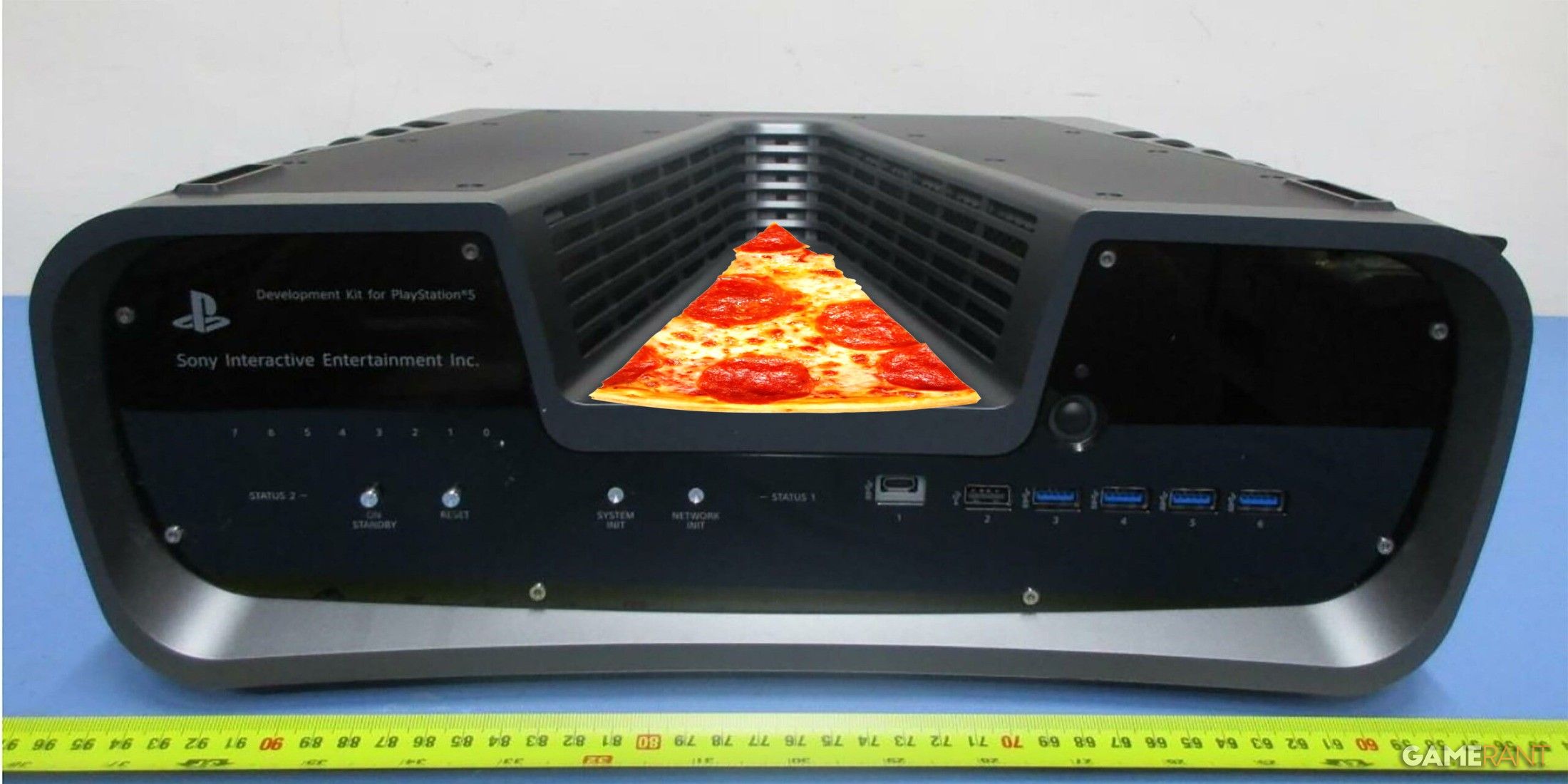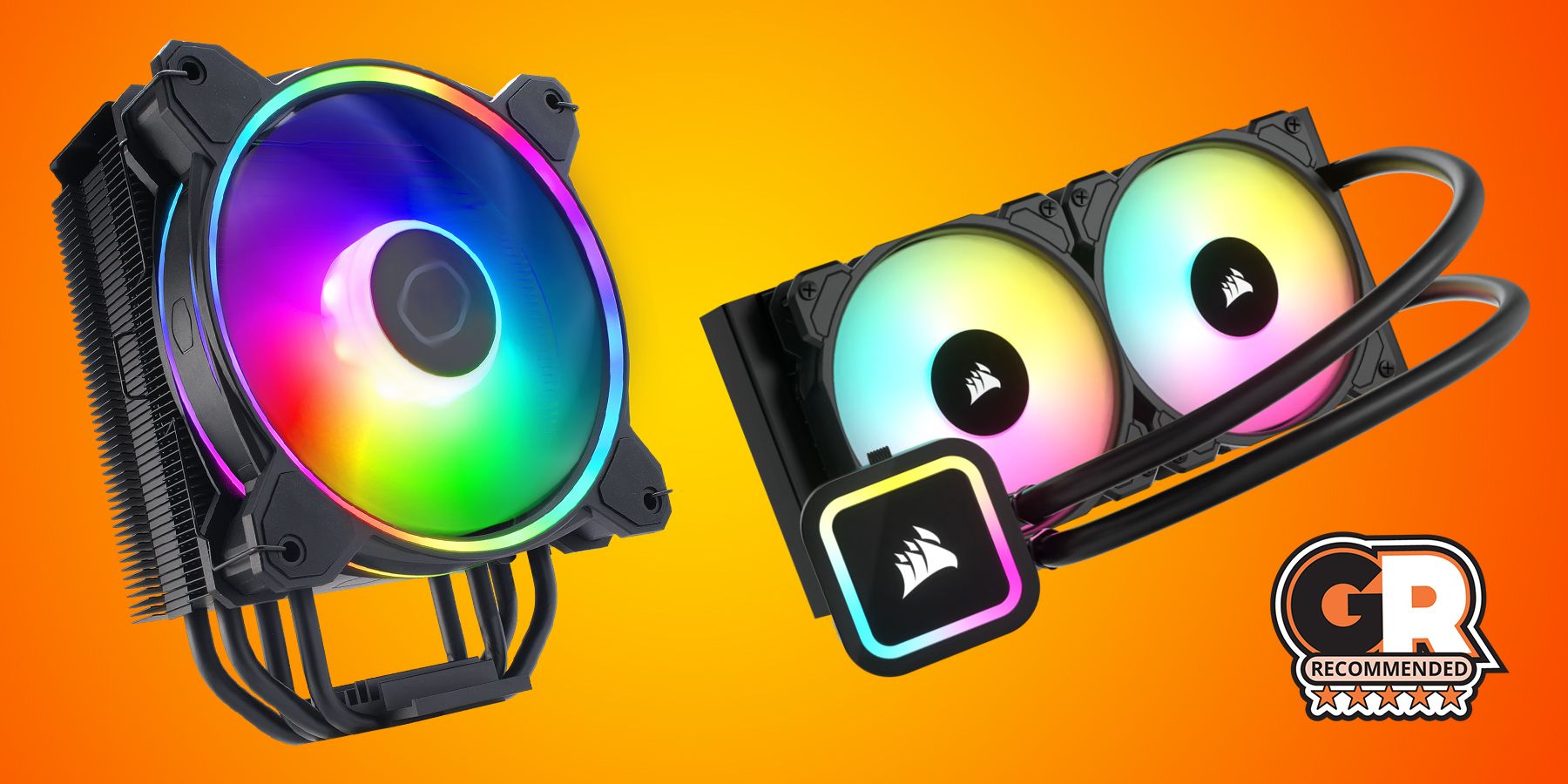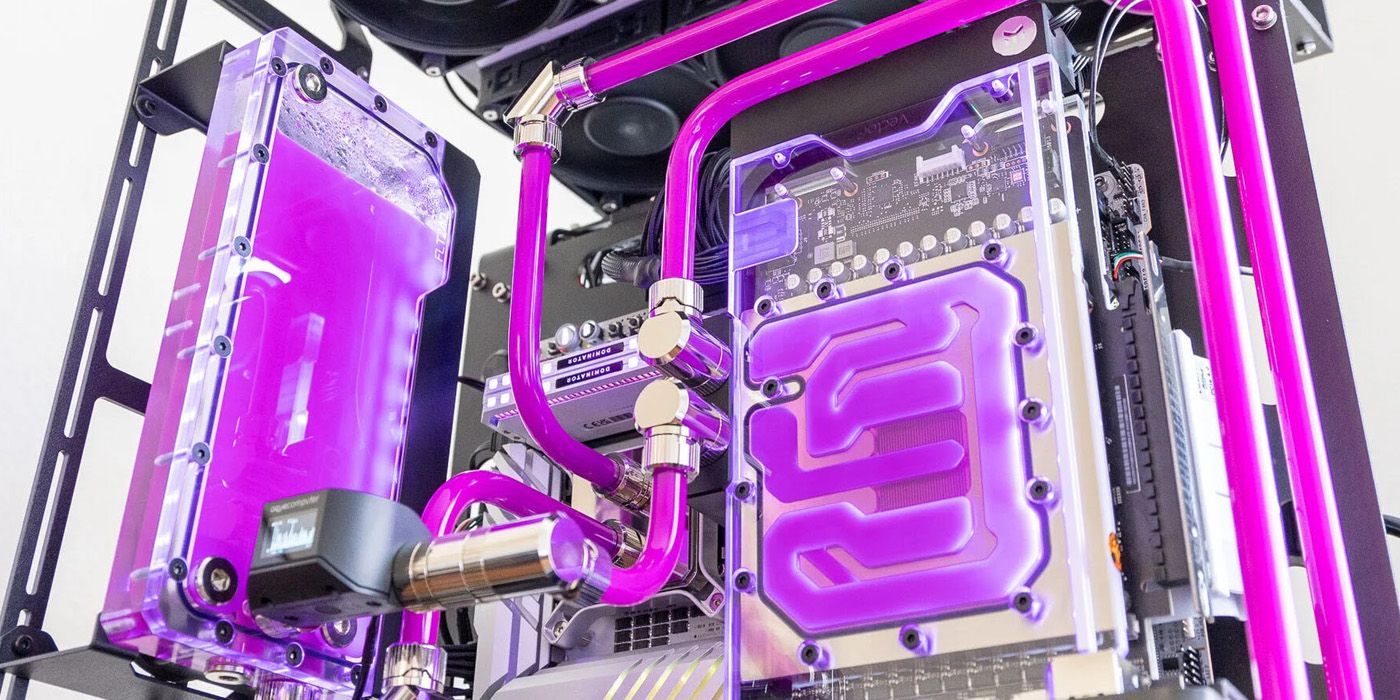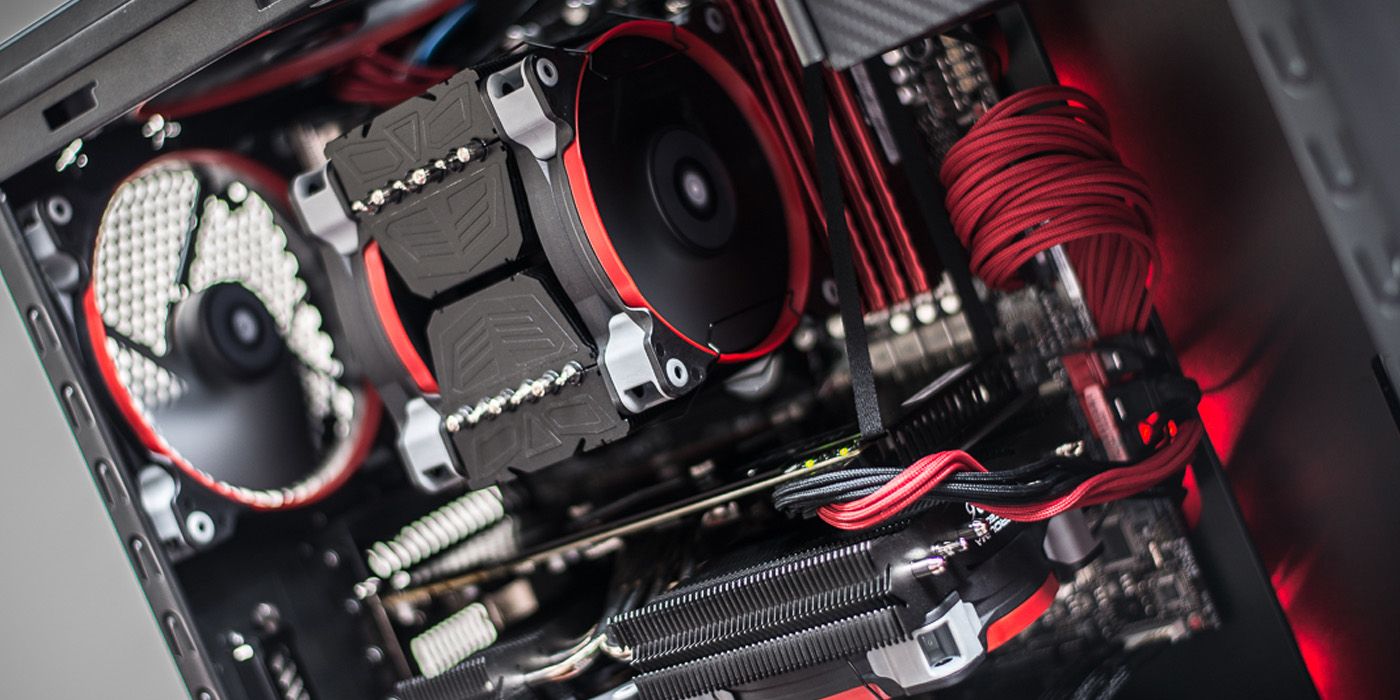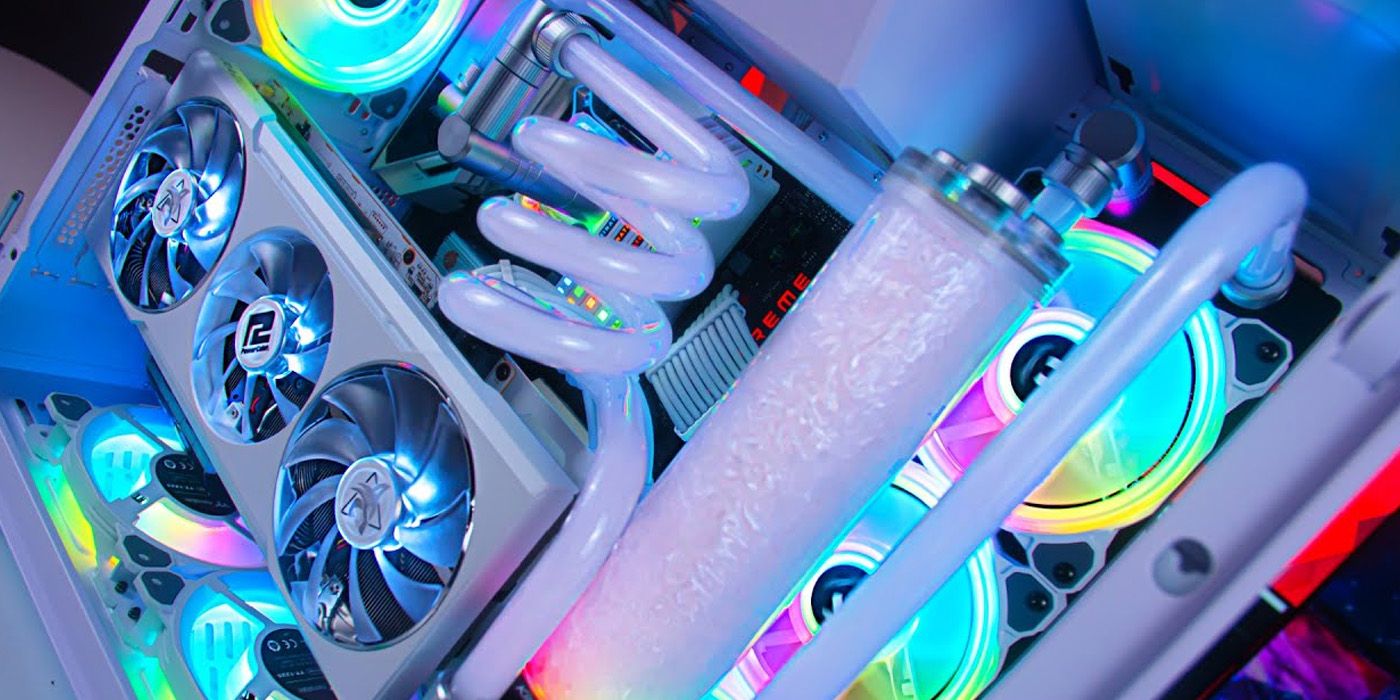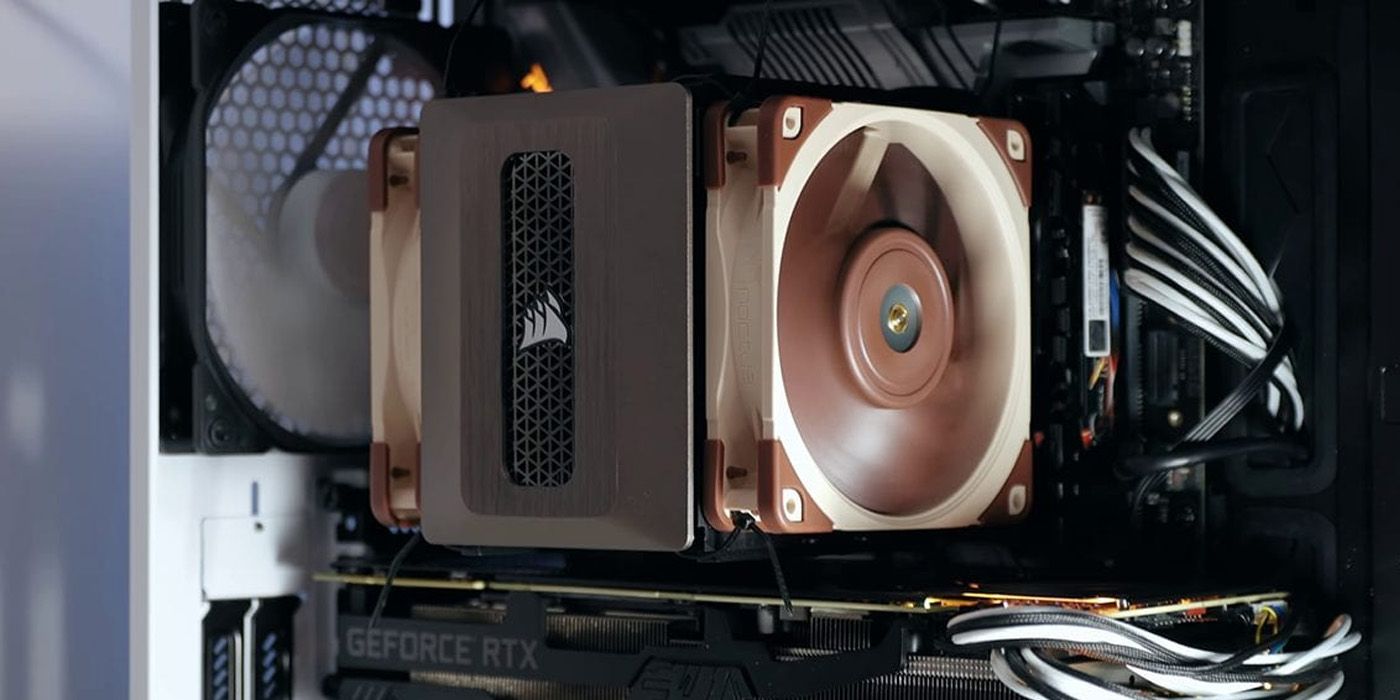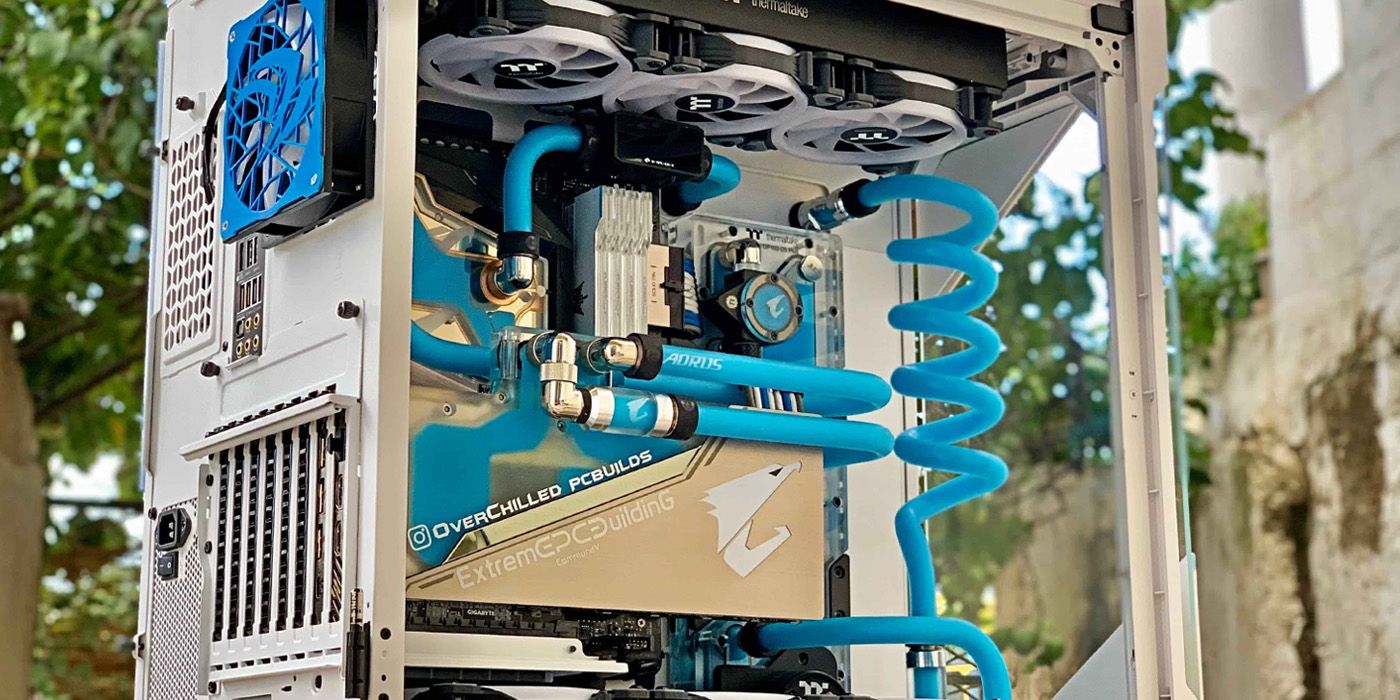The choice between air cooling and water cooling has been a long-argued debate among PC enthusiasts. Each method brings advantages and disadvantages that could make or break the decision. At a glance, air cooled systems look basic and simplistic in appearance. Whereas water cooled systems tend to be more complex and visually appealing. Although it's easy to choose a preference based on appearances, implementing these cooling systems requires some steps and extra consideration.
For those stuck between the decision of the ultimate cooling method, look no further. This article asks all the questions surrounding the pros and cons of each cooling method, and offers an in-depth examination of both so that the best decision can be made for any individual.
How To Compare Cooling Methods
When pitting air cooled systems against water cooled systems, several factors should be considered to make the most informed decision:
- Budget: First and foremost, setting a realistic budget is paramount. Generally, air cooled systems are priced cheaper and will be more affordable than their liquid cooled counterparts. It is vital to gather enough information to gauge the overall cost of either cooling solution.
- Performance & Efficiency: Likewise, although water cooled systems are more expensive up front, they have been proven to be the more efficient choice between the two when it comes to low temperatures. Lower temperatures aid the overall performance and health of internal components, leading to a longer lifespan.
- Noise Level: Noise level dictates the amount of background noise the system makes while running. Generally, an air cooled system relies only on fans that will need to run at a higher RPM, and therefore produce more noise.
- Visuals & Customization: True customization is easier when working with water cooled computers due to the ample selection of individual components. These systems are also typically more sleek and mesh well with the PC case by taking up much less room than air cooled systems.
- Maintenance: Generally, water cooled systems require regular maintenance to ensure low temps and a healthy loop. Air cooled systems, on the other hand, tend to be more forgiving and require much less work overall.
- Difficulty: Water cooled systems have a unique learning curve that is independent of the ins and outs of building a PC. This learning curve adds a layer of difficulty and additional work that needs to be considered before committing to this cooling method.
Budget
-
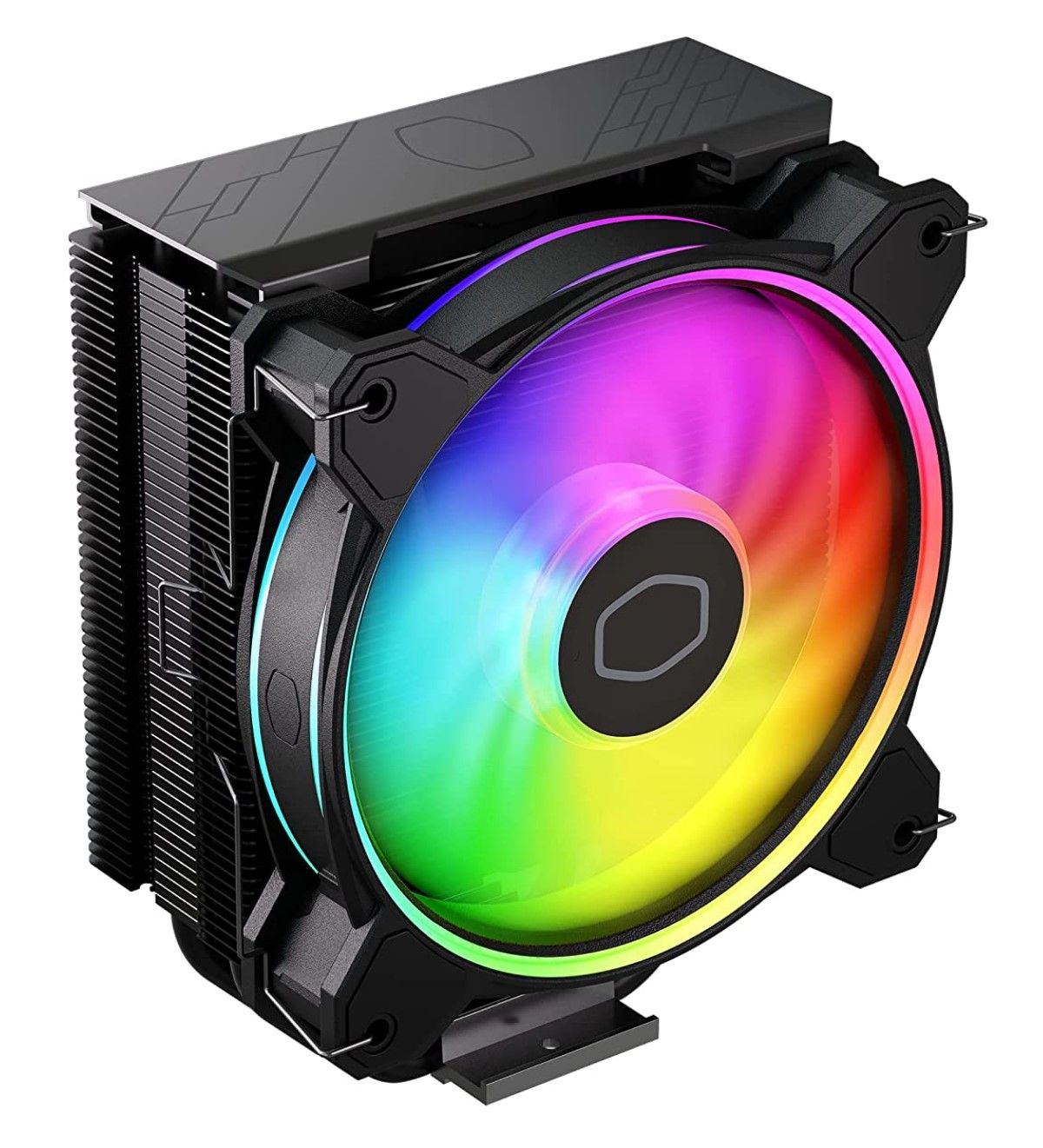
Cooler Master Hyper 212 Halo Black
$42 $50 Save $8The Cooler Master Hyper 212 combines aesthetics and effective cooling capability all at an appealing price point. This air cooler is a great solution for first-time and experienced builders who are looking for a budget cooling solution that is compatible with most Intel and AMD boards. That being said, it should be noted that this CPU cooler is not designed for small cases and should be limited to larger builds that offer enough vertical clearance.
Pros- Good Value
- Comes With Thermal Paste
Cons- Occupies A Lot of Space
- Not As Quiet
-
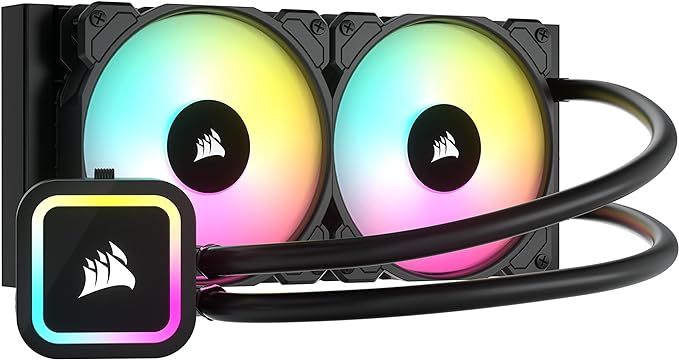
Corsair H100x RGB Elite Liquid CPU Cooler
The Corsair H100x RGB Elite AIO Cooler offers an attractive cooling solution for the latest Intel and AMD motherboards. With Corsair's iCUE software, users will be able to fully utilize all RGB functionality and customize this AIO to their liking. This CPU Cooler comes with a 240 mm radiator, which is an ideal size that easily fits most PC cases, without sacrificing cooling capabilities.
Pros- 240mm Radiator Fits Most Cases
- Quiet and Cool
- Comes With Pre-Applied Thermal Paste
Cons- Instructions Are Difficult To Read
Generally, air cooling is the more cost-effective choice when cooling a PC. The primary items that users need to prioritize when building an air cooled system boil down to a few key things: a quality CPU Air Cooler, a selection of case fans, and although it's optional, investing in a PC case that promotes airflow may also prove to be beneficial. When building an air cooled system, users can expect to save even more money by utilizing the stock GPU cooler and relying solely on the power of fans to keep everything at an appropriate temperature.
Calculating costs for a water cooled system gets a little more complicated. Suppose a user is set on going the extra mile and wants to build a water cooling loop aimed at maximum performance. In that case, many more items are considered necessary to purchase, such as case fans, radiators, reservoirs/distribution plates (Distro), tubing, fittings, as well as GPU and CPU blocks. The combined cost of these components can exponentially bring up the overall cost of building a PC.
Although this may sound intimidating, there is another option available that allows users to reap the benefits of water cooling their PC, without all the hard work and added purchases. By utilizing an All-In-One (AIO) Liquid Cooler, players can receive the benefits of liquid cooling their CPU without the full complexity of building a full water cooling loop.
Performance & Efficiency
It should be noted first that the optimal performance of either method is contingent on a variety of factors such as environment, case design, and the TDP (Thermal Design Power) of components.
When comparing temperatures side by side, however, it's clear to see that water cooling a system results in lower temperatures. This is because of the thermal conductivity of the coolant, which leads to a more effective transfer of heat. Simply put, the liquid inside a water cooled loop absorbs much of the heat and pulls it away from the hot components. This heated coolant is then transferred to a radiator, where it is cooled instantaneously with the help of fans. From there, a cycle of heat transferring away from components is formed, and that makes up the loop.
Although air coolers have historically done a decent job of keeping things cool, components are getting hotter and more powerful every year. This can be seen in the climbing average TDP, which measures the amount of heat a chip produces. To counteract these high temperatures, air coolers tend to have large and bulky designs.
Noise Level
Air cooled systems are often associated with noticeable fan noise, this can be seen when running particularly demanding software or games. Fans and coolers are programmed to meet a computer's needs, and will kick speeds up to maximum to keep components cool if necessary. When this happens, the comparison of a desktop PC sounding like a helicopter taking flight tends to come to mind.
Alternatively, water cooled PCs are famous for being a whisper-quiet solution. Fans can spin at a much lower RPM, delivering a much quieter experience. This is true even under demanding conditions. It should be noted, however, that the introduction of water to a cooling solution brings about its own variety of noises. Depending on the water level, it's not uncommon to hear a subtle trickling noise or the sound of a pump spinning.
Ultimately, the quiet operation of water cooled PCs makes them a better solution for environments where noise levels are important. Such as recording, streaming, or keeping a PC close to where one sleeps.
Visuals & Customization
Admittedly, the core reason why many opt to water cool their system boils down to visuals. Air cooled systems tend to be very basic and uniform, not to mention bulky. Designs and color options are dependent on the manufacturer, providing fewer options to truly customize one's build. Although there is some DIY customization that can be done, air cooling drastically limits options and creative freedom.
In contrast, water cooling offers a visually appealing end result that can easily be tailored to one's preferences. This flexibility comes from the wide array of components and choices available. Users have more agency to choose the designs and materials of individual parts. Additionally, a user can further customize a setup with the addition of RGB, the shape and direction of tubing, and colored coolant. Water cooling also offers increased versatility when building in small form factor (SFF) cases because of its variety of options for sizing.
With this total freedom of creativity considered, it's easy to understand why there is such a thriving online community for custom-built water cooled PCs. This community of builders frequently creates innovative designs that redefine what a PC can look like. Oftentimes, it's not uncommon to find members of these online communities showcasing a water cooled PC that doubles as a piece of art.

The Best RGB CPU Coolers in 2024
RGB lighting is all the rage when it comes to PC gaming. Here are some of our performing cooling options with excellent RGB in tow!
Maintenance
When it comes to ease of maintenance, air cooled PCs can't be beat in terms of simplicity. These systems are incredibly forgiving and require a good dusting a few times a year to keep things running efficiently. In a more intensive scenario, these systems may require complete disassembly every few years to blow out the dust accumulated on fans, heat sinks, and air coolers. It's also good practice to reapply thermal paste at this time.
Water cooling loops, on the other hand, require much more maintenance. It is imperative for a user to periodically check coolant levels and clarity, as any sudden changes in coolant may indicate a problem that needs to be addressed as soon as possible. For optimal system health, flushing the loop out and replacing the coolant every 6 months or so is recommended. This prevents stains and severe sediment build-up. Although this may seem like an ordeal, these systems can go longer between coolant changes if needed. In scenarios requiring intensive care, a full disassembly of the loop and components may be needed.
Difficulty
Air cooling is widely considered a beginner-friendly option, as just about anyone with access to basic PC building knowledge can confidently do it. The process itself is incredibly straightforward and simplistic to begin with and install. A user interested in air cooling will first need to identify the right air cooler for their CPU, and then ensure they have the right amount of fans to create a healthy and optimized pressure system within their PC.
Water cooling, on the other hand, requires ample research and hands-on practice to learn the ins and outs. Building and maintaining a water cooled system needs a lot of patience and caution to prevent leaks and potential damage to components. Water cooling is best suited for a confident PC gaming enthusiast who is willing to invest time and effort in learning the intricacies of liquid cooling. That being said, users might find water cooling PCs to be a more rewarding process with a greater end result regarding both performance and appearance.
Which Is Better For Gaming?
Water cooling is ultimately the better option for PC enthusiasts looking to upgrade their systems to prioritize smoother, top-tier gaming performance as well as breathtaking aesthetics. A water cooled PC requires more hands-on effort and experience, as well as an individual who is willing to invest additional time and money into their gaming system. These individuals will be well rewarded with a system that will maintain better thermals, smoother performance, live longer, and provide a quieter experience.
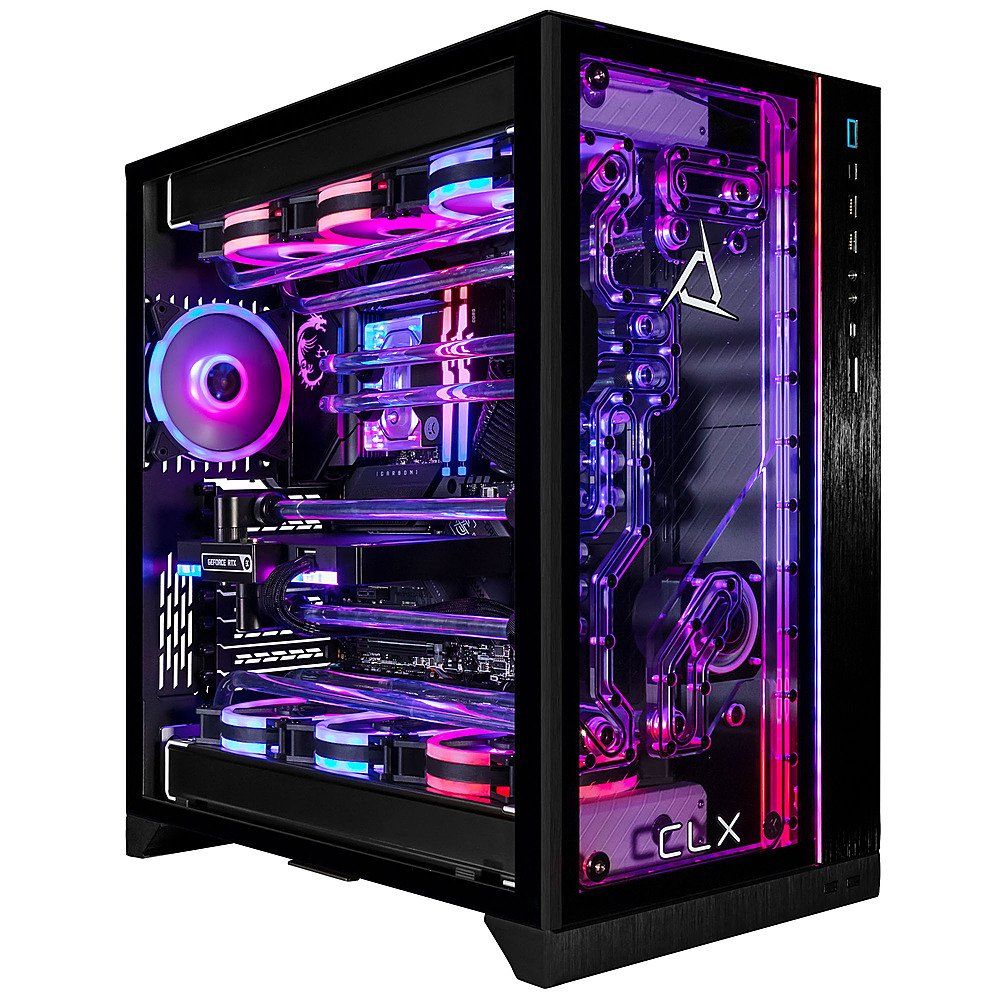
CLX - RA Gaming Desktop
When it comes to high-end, quality performance, the CLX - RA gaming desktop reigns supreme. This fully water-cooled PC comes with the top-of-the-line Nvidia RTX 4090, and an Intel Core i9-13900K to match.
- Breathtaking Design
- High-End Components
- Unparalleled Gameplay
- Expensive
- Heavy
- Requires Regular Maintenance
Air cooling, on the other hand, offers a simplistic and beginner-friendly approach to cooling a PC. This cooling method is a straightforward solution for those who just want their system to run games without the need to delve into complex customization. Air cooling is the budget-friendly option, making it a better choice for users with financial constraints.
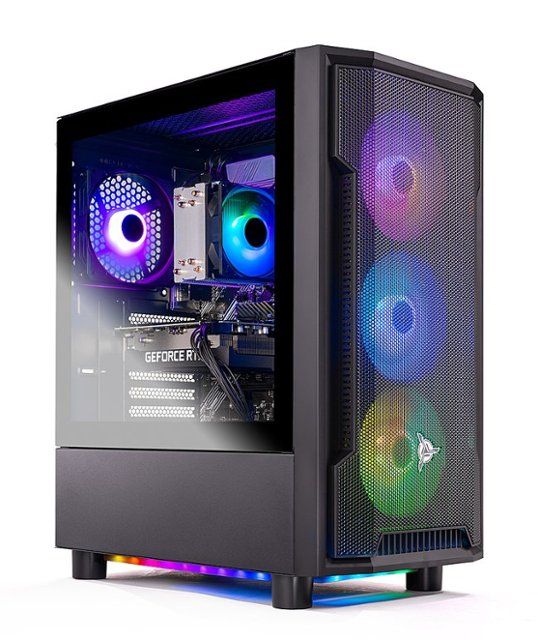
Skytech Gaming - Shadow 4 Gaming Desktop PC
The Skytech Gaming Shadow 4 offers powerful components well-suited for casual to some high-end gaming at an affordable price. This air-cooled PC features an Nvidia RTX 4060, and a capable Intel Core i5-13400F processor to ensure smooth, uninterrupted gameplay.
- Budget-Friendly
- Easy To Maintain
- Sub-Optimal Temps
- Additional Noise
In the end, the choice between air cooling and water cooling a PC depends on an individual's preference, budget, experience, and time.


